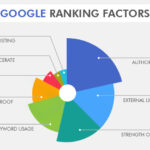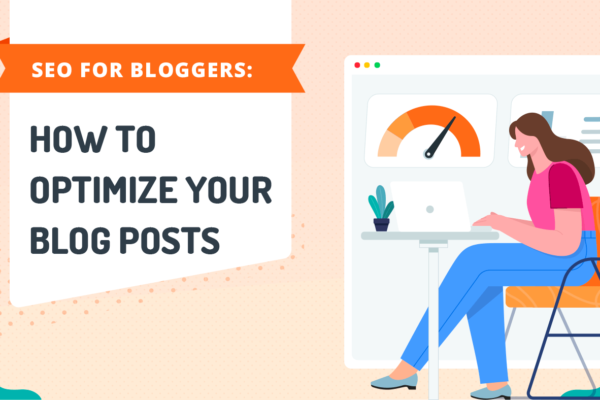Integrating SEO with digital marketing is essential for achieving better results in today’s competitive online landscape. SEO ensures that your website ranks higher in search engine results, driving organic traffic, while digital marketing strategies such as social media, email marketing, and paid ads help reach a broader audience. By aligning these efforts, businesses create a cohesive marketing strategy that enhances visibility, engages potential customers, and increases conversions.
What is SEO?
SEO, or Search Engine Optimization, refers to the practice of optimizing websites to improve their visibility and ranking on search engine results pages (SERPs). The goal of SEO is to attract more organic (non-paid) traffic by making a website more appealing to search engines like Google, Bing, and Yahoo. This involves a combination of strategies such as keyword research, content optimization, technical improvements (like site speed and mobile-friendliness), and building backlinks. Effective SEO ensures that a website ranks higher for relevant search queries, making it easier for users to find and engage with the content or services offered. Ultimately, SEO is a crucial tool for enhancing online presence and driving more targeted traffic.
What is Digital Marketing ?
Digital marketing refers to the use of digital channels, platforms, and technologies to promote and advertise products or services to a target audience. It encompasses a wide range of activities such as search engine optimization (SEO), social media marketing, email marketing, content creation, paid advertising, and influencer partnerships. The goal of digital marketing is to connect businesses with consumers online, build brand awareness, drive traffic to websites, generate leads, and increase sales. It leverages data-driven insights to optimize strategies and ensures businesses can reach their audience effectively across various digital touchpoints, such as websites, mobile apps, social media, and search engines.
The Role of SEO in Digital Marketing
SEO (Search Engine Optimization) plays a critical role in digital marketing by helping websites improve their visibility on search engines, thereby increasing traffic, engagement, and conversions. Here’s a breakdown of its importance:
- Increased Organic Traffic: SEO ensures your website ranks higher in search engine results, making it more likely that users will click on your site. Organic search results (non-paid) drive the majority of web traffic, often outperforming other marketing channels.
- Cost-Effective Strategy: Unlike paid ads, SEO focuses on long-term growth and sustainability. Once your website ranks high, you can maintain that ranking with regular optimization efforts, which can be less costly than continuously running paid advertising campaigns.
- Enhanced User Experience: SEO not only involves optimizing for search engines but also improves the user experience. This includes fast page load times, mobile-friendliness, clear site structure, and relevant content, which are crucial factors that search engines like Google take into account when ranking websites.
- Better ROI: Because SEO is focused on bringing in highly relevant traffic, the return on investment (ROI) can be significant. With proper keyword research and high-quality content, businesses can achieve a high ROI over time compared to other digital marketing methods.
- Targeted Traffic: SEO helps attract the right kind of traffic to your website. By optimizing for specific keywords related to your products or services, you can connect with users who are actively searching for what you offer, increasing the likelihood of conversion.
- Supporting Content Marketing: SEO and content marketing go hand in hand. High-quality, keyword-optimized content helps attract users and enhances engagement. Content that answers users’ questions or solves their problems can significantly improve SEO results.
Integration of SEO & Digital Marketing
Integrating SEO and Digital Marketing is essential for improving a brand’s online visibility, driving traffic, and increasing conversions. Both strategies work hand-in-hand but focus on different aspects of digital presence.
Here’s how to integrate them effectively:
- Align SEO with Digital Marketing Strategy
- Content Marketing: SEO relies heavily on high-quality content, which is also a core part of digital marketing strategies. Create SEO-optimized content that addresses user queries and incorporates keywords, while keeping the audience engaged.
- Paid Search Campaigns (PPC): Digital marketing often involves paid campaigns such as Google Ads or social media ads. SEO insights, like keyword research, can inform these paid strategies by helping target the right audience with high-performing keywords.
- Social Media Marketing: Social signals (engagement on social media) may not directly impact SEO, but integrating both strategies ensures that content is shared across platforms, boosting traffic and potentially improving rankings. Additionally, promoting SEO-optimized content on social media increases visibility.
- Keyword Research and Targeting
- SEO involves identifying the right keywords, and digital marketing can amplify this through paid ads and social media posts. Use tools like Google Keyword Planner to find high-traffic keywords and integrate them in both organic and paid content.
- Remarketing: SEO can improve long-term visibility, while digital marketing strategies like remarketing help re-engage visitors who didn’t convert the first time, increasing the likelihood of conversions.
- User Experience (UX) Optimization
- SEO requires a well-designed, fast, and mobile-friendly website. This complements digital marketing efforts, as both work best when the site is easy to navigate and optimized for conversions.
- A/B Testing: Both SEO and digital marketing can benefit from A/B testing. For instance, SEO can optimize landing page elements for better rankings, while digital marketing can test various CTAs or layouts to enhance user experience and conversion rates.
- Data Analytics and Insights
- Use tools like Google Analytics to track traffic, conversion rates, and engagement for both SEO and digital marketing campaigns. Understanding this data allows for optimization in both fields—adjusting keywords for SEO and targeting for paid campaigns.
- Regular reporting can help measure how well SEO impacts digital marketing goals (or vice versa) and identify areas for improvement.
- Integrated Campaigns
- Running an integrated campaign means aligning SEO content, social media promotion, email marketing, and paid advertising to work towards a unified goal. For example, optimizing blog content for SEO, sharing it on social media, and running PPC campaigns around it.
- Email Marketing: SEO-optimized blog posts or landing pages can be shared in email marketing campaigns, driving traffic and improving both organic search results and conversion rates.
- Link Building and Outreach
- In SEO, building high-quality backlinks is key for improving domain authority. Digital marketing tactics like influencer outreach and partnership marketing can play a role in generating backlinks to boost SEO.
- Influencer Marketing: Influencers can help build brand awareness and drive traffic, which has an indirect SEO benefit by increasing engagement and traffic to your site.
- Local SEO & Location-Based Marketing
- For businesses targeting specific regions, integrating local SEO with location-based marketing campaigns ensures that content is targeted to local audiences. This includes optimizing Google My Business profiles and targeting geo-specific keywords in ads.
By aligning both strategies and ensuring they complement each other, businesses can leverage the full power of SEO and digital marketing to increase visibility, engage the right audience, and improve overall performance.
Types of SEO in Digital Marketing
In digital marketing, SEO (Search Engine Optimization) is crucial for increasing a website’s visibility in search engine results. There are several types of SEO strategies, each focusing on different aspects of a website’s optimization.
The main types are:
- On-Page SEO
This type involves optimizing the content and structure of a website to make it more appealing to search engines. It includes:
- Keyword optimization: Using relevant keywords in titles, headings, and content.
- Meta tags: Optimizing meta descriptions, title tags, and alt text for images.
- Internal linking: Creating links between pages on your website to improve navigation and site structure.
- Content quality: Ensuring content is useful, well-researched, and relevant to user intent.
- URL structure: Optimizing URLs to be clean, descriptive, and user-friendly.
- Off-Page SEO
This refers to activities performed outside of your website to improve its search engine ranking. The focus here is on building the site’s reputation and authority through:
- Backlinks: Acquiring high-quality links from other websites that point to your site.
- Social media: Promoting content on social media platforms to increase visibility and drive traffic.
- Brand mentions: Ensuring your brand is discussed in relevant contexts across the web, even without links.
- Influencer marketing: Collaborating with influencers to get more exposure and authority.
- Local SEO
This type of SEO focuses on optimizing a website to rank well for location-specific searches. It’s important for businesses with a physical presence or those targeting local markets. Key strategies include:
- Google My Business: Claiming and optimizing your Google My Business listing.
- Local citations: Getting listed in local directories and ensuring the NAP (Name, Address, Phone Number) is consistent across all platforms.
- Local backlinks: Building backlinks from local websites and blogs.
- Localized content: Creating content that is relevant to the local audience and includes local keywords.
- Technical SEO
This involves optimizing the technical aspects of a website to ensure that search engines can crawl, index, and rank the site effectively. Key elements include:
- Website speed optimization: Ensuring that pages load quickly.
- Mobile-friendliness: Making sure the website is responsive and performs well on mobile devices.
- XML Sitemap: Creating and submitting an XML sitemap to help search engines crawl the site more efficiently.
- Structured data (Schema markup): Using schema markup to provide search engines with more information about the content.
- Crawlability and indexability: Ensuring there are no issues preventing search engines from crawling and indexing important pages.
- E-commerce SEO
This focuses specifically on optimizing e-commerce websites to drive traffic and increase sales. It includes:
- Product page optimization: Ensuring product titles, descriptions, images, and prices are optimized with relevant keywords.
- User reviews: Encouraging customers to leave reviews to boost rankings and trust.
- Faceted navigation: Ensuring that filters and search options on product pages don’t create duplicate content issues.
- Voice Search SEO
As voice assistants like Siri, Alexa, and Google Assistant become more popular, optimizing for voice search has gained importance. Key tactics include:
- Conversational keywords: Using natural language phrases and questions in content.
- FAQ pages: Creating FAQ pages that answer common queries.
- Featured snippets: Optimizing content to appear as featured snippets in search results.
- Video SEO
This type involves optimizing video content for search engines. It’s important for platforms like YouTube, but can also apply to videos hosted on your website. Key strategies include:
- Optimizing video titles and descriptions with relevant keywords.
- Using closed captions and transcripts to help search engines understand the video content.
- Thumbnails: Creating eye-catching thumbnails to improve click-through rates.
- Video engagement: Encouraging likes, shares, and comments to improve rankings.
Improve Your ROI by Merging SEO and Digital Marketing
Merging SEO (Search Engine Optimization) and digital marketing is an effective strategy to improve your ROI (Return on Investment). Here’s how combining these two can yield significant results:
- Enhanced Visibility and Reach
- SEO focuses on improving your website’s ranking on search engines, making it more discoverable to potential customers.
- Digital Marketing amplifies your reach through paid advertising, email marketing, social media, and content marketing, driving traffic from diverse channels.
- By integrating both, you increase your online visibility in organic search results while simultaneously engaging users through paid campaigns, leading to higher traffic and brand recognition.
- Improved Targeting and Personalization
- SEO can help optimize your content based on keyword research, targeting users who are actively searching for relevant information or products.
- Digital Marketing tools (like email segmentation or paid ads) allow for precise targeting, enabling you to tailor content and offers to specific demographics or interests.
- Together, these strategies ensure that your messages are reaching the right people, at the right time, with content that resonates.
- Higher Conversion Rates
- SEO improves the user experience by optimizing your site for faster loading times, mobile-friendliness, and navigational ease, which ultimately boosts conversions.
- Digital Marketing provides continuous engagement through retargeting ads, email follow-ups, and personalized offers to users who have shown interest.
- Combining the two increases the likelihood of conversion by nurturing leads and encouraging them to take action.
- Better Analytics and Data Insights
- Both SEO and Digital Marketing offer valuable insights through data tracking tools (Google Analytics, social media analytics, etc.).
- Merging these data sources allows you to analyze user behavior, understand trends, and refine your marketing strategies for better performance.
- With better insights, you can make data-driven decisions that maximize your marketing efforts and ROI.
- Cost-Effective Long-Term Strategy
- While SEO might take time to show significant results, its long-term benefits make it a cost-effective approach for sustainable growth. Organic search can continue to generate traffic for months or years after the initial optimization.
- Digital Marketing can provide quicker results through paid ads and campaigns, but it requires ongoing investment.
- By merging both, you balance short-term and long-term strategies, reducing your reliance on paid ads and maximizing the returns from organic search traffic.
- Consistent Brand Messaging
- Integrating SEO with digital marketing ensures consistency in messaging across all channels.
- Whether a user discovers your brand through organic search, social media, or email, they will experience a cohesive brand presence, which strengthens brand awareness and trust.
















